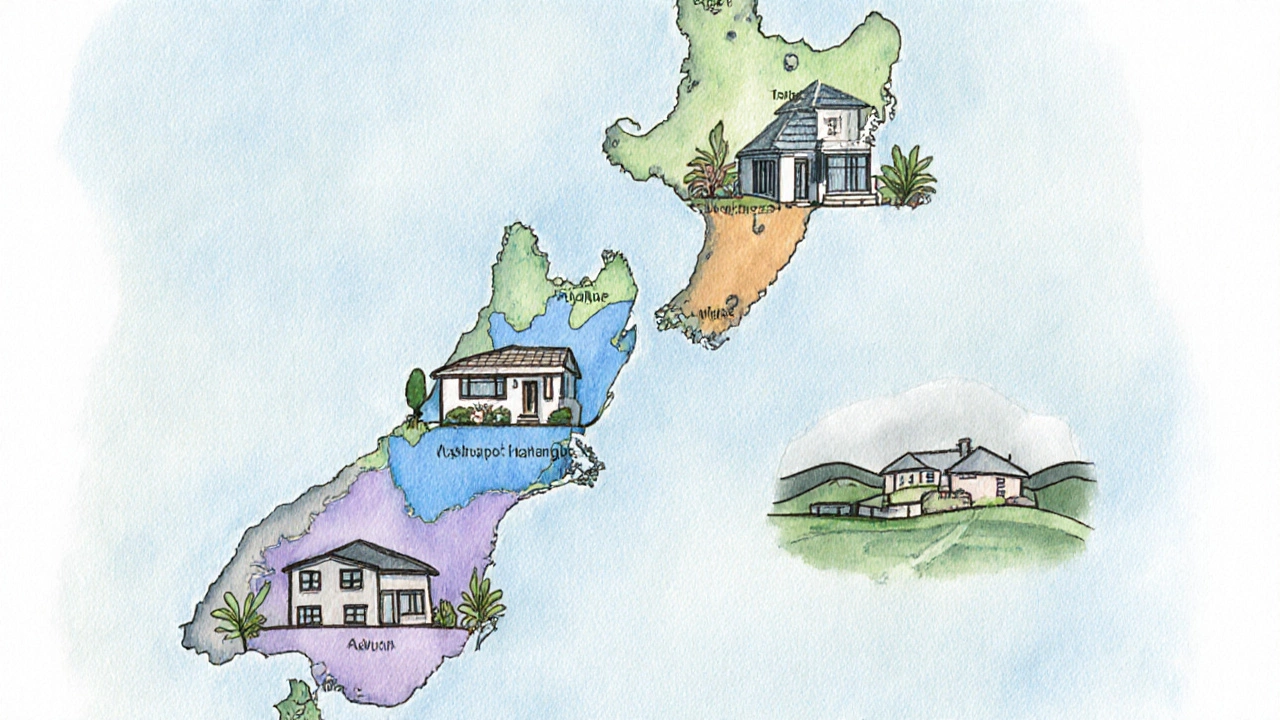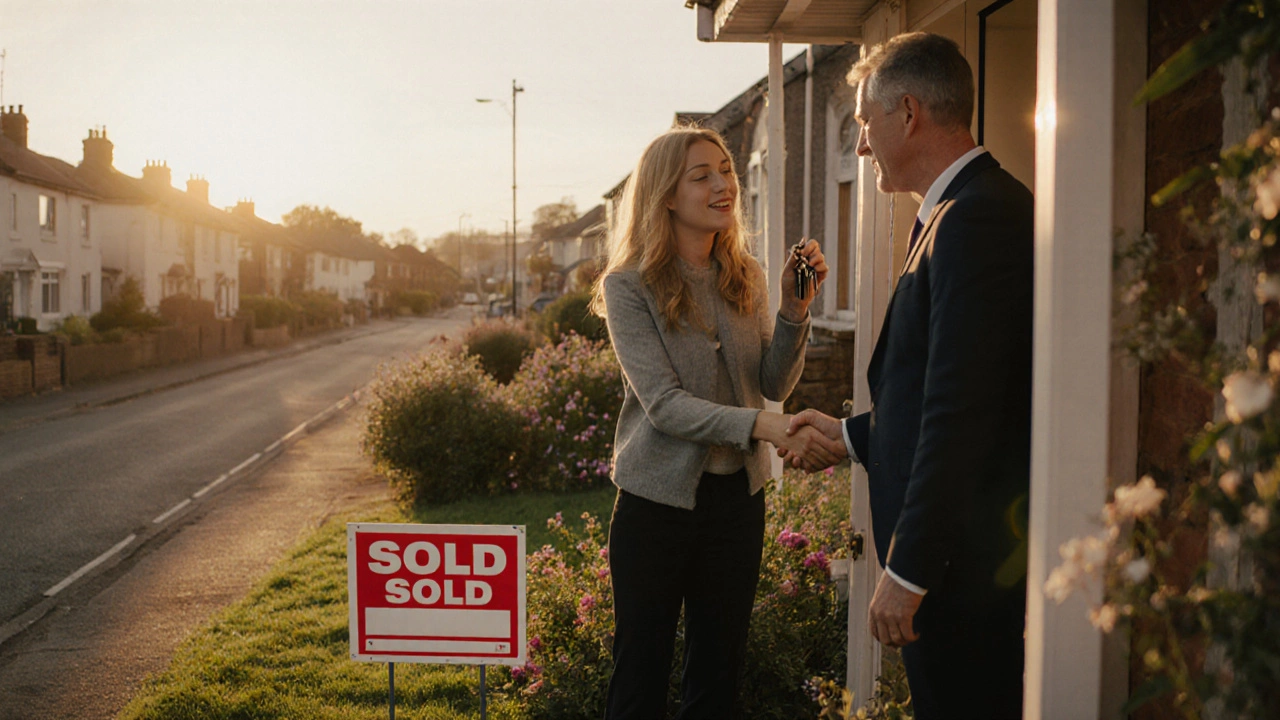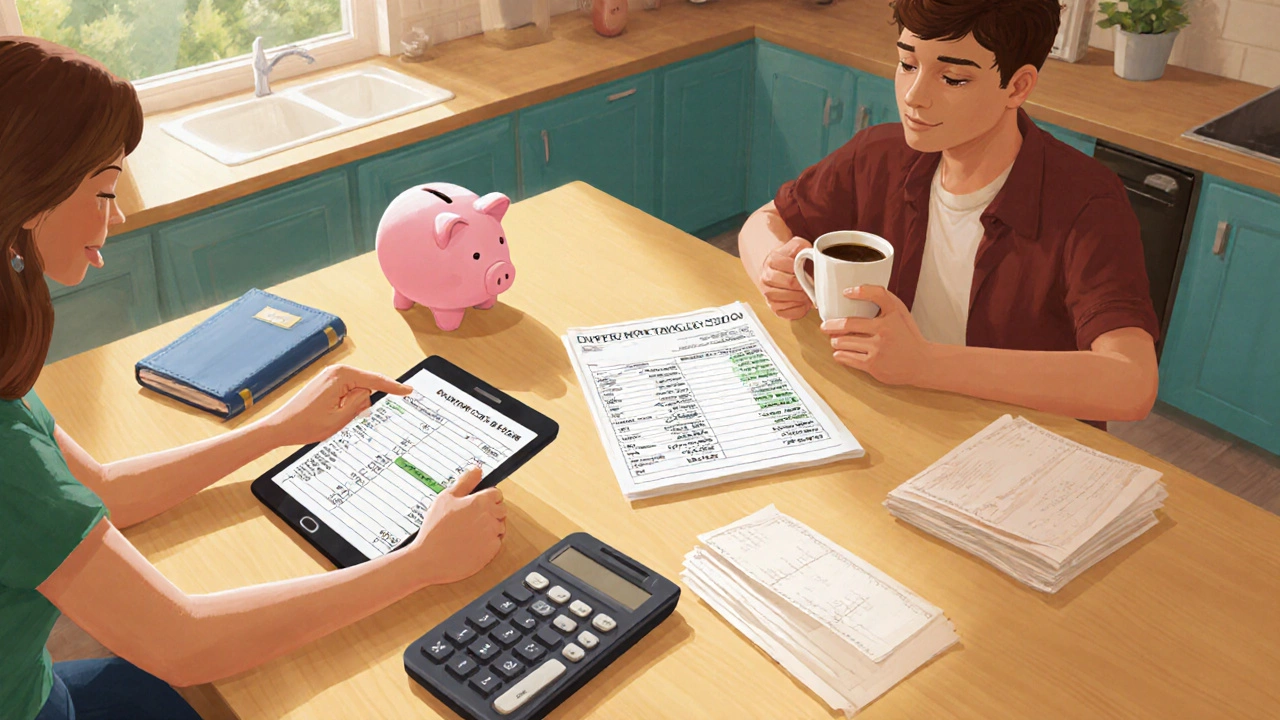House Affordability Calculator
Your Affordability Results
Enter your details and click "Calculate" to see how much house you can buy with your $50,000 deposit.
Breakdown of Your $50,000
- Deposit: This is what goes toward your property purchase
- Fees: Legal, inspection, and other upfront costs
- Moving Costs: Relocation and initial home improvements
Key Takeaways
- With $50,000 you can realistically buy a property priced between $150,000 and $250,000, depending on location and loan terms.
- Most lenders require a 10‑20% deposit; the rest can be covered by a mortgage.
- Shared ownership and rent‑to‑own schemes can stretch your budget farther.
- Keep an eye on ongoing costs - council rates, insurance, and maintenance can add 1‑2% of the purchase price per year.
- Using a mortgage calculator early on will save you time and prevent surprises.
Understanding house affordability starts with a clear picture of your financial situation. When you ask, "What house can I afford with $50,000?" you’re really wondering how far that cash can stretch when you factor in a mortgage, interest, and everyday expenses.
House affordability is the amount of property you can realistically purchase given your budget, income, and borrowing capacity. In New Zealand the rule of thumb is a loan‑to‑value ratio (LTV) of up to 80%, meaning you need at least a 20% deposit. If you have $50,000 ready to spend, that amount becomes your deposit cushion plus any extra costs you’ll face before you move in.
1. Break Down the $50,000 Budget
First, separate the cash you have into three buckets:
- Deposit - the upfront payment to secure a loan. Most banks ask for 10‑20% of the purchase price.
- Legal and inspection fees - conveyancing, LIM reports, and building inspections typically run $2,000‑$4,000.
- Moving & initial repairs - budget $1,000‑$3,000 for a first‑time buyer’s inevitable tweaks.
Assuming you set aside $5,000 for fees, you’re left with $45,000 that can act as a deposit.
2. How Much Property Can $45,000 Buy?
Use the simple formula:
Maximum purchase price = Deposit ÷ Minimum deposit %
If you qualify for a 15% deposit, the math looks like this:
$45,000 ÷ 0.15 = $300,000
That $300,000 figure is the ceiling before you factor in debt‑to‑income (DTI) limits. Most lenders in New Zealand cap DTI at around 5.5 times your annual gross income. If you earn $70,000 a year, the maximum loan they’ll consider is roughly $385,000, which comfortably covers the $300,000 purchase price.
3. Quick Mortgage Calculator Snapshot
Plug these numbers into any free mortgage calculator and you’ll see:
- Loan amount: $255,000 (80% of $300,000)
- Interest rate: 6.5% (typical 30‑year fixed rate in 2025)
- Monthly repayment: about $1,610
- Annual cost: $19,320
Compare that to a typical household budget - if your after‑tax income is $55,000, a $1,610 mortgage represents roughly 35% of your net monthly earnings, which is within the NZ Mortgage Affordability guideline of 30‑40%.

4. Location Matters - Where Does 0,000 Get You?
New Zealand’s property market is highly regional. Here’s a rough breakdown for 2025:
- Auckland suburbs (outside the CBD): $500,000‑$700,000 for a 2‑bedroom unit - $300,000 will only buy a studio or a land‑bank plot.
- Hamilton, Tauranga, and Whangarei: $350,000‑$450,000 for a three‑bedroom house - you could snag a modest family home with a small garden.
- Wellington outer suburbs: $300,000‑$380,000 for a terraced house.
- South Island towns (e.g., Nelson, Rotorua, Invercargill): $250,000‑$320,000 for a new‑build three‑bedroom house.
If flexibility on location is an option, you’ll stretch that $50,000 deposit the farthest in regions where property prices hover around $250,000‑$300,000.
5. Financing Options Beyond a Standard Mortgage
Not all first‑time buyers fit the classic 20% deposit model. Consider these alternatives:
| Option | Minimum deposit | Typical interest rate | Pros | Cons |
|---|---|---|---|---|
| Traditional mortgage | 10‑20% | 6.0%‑6.8% (30‑yr fixed) | Full ownership, equity builds fast | Higher deposit needed, stricter credit checks |
| Shared ownership | 5‑10% | 5.5%‑6.2% (variable) | Lower deposit, rent‑to‑own flexibility | Only part of the property is owned; rent paid on remaining share |
| Rent‑to‑own | 3‑5% | 6.5%‑7.5% (effective) | Very low upfront cash, lease‑to‑purchase path | Higher overall cost, limited lenders |
Shared ownership is especially popular in Auckland’s new‑build apartments, letting you buy a 30‑40% share while the housing board retains the rest. After a set period (usually 5‑10 years), you can purchase additional shares.
6. Key Financial Metrics to Track
When you sit down with a loan officer, keep these numbers front‑and‑center:
- Credit score: Aim for 700+ to secure the best rates.
- Loan‑to‑value ratio (LTV): Below 80% is ideal; some lenders will go to 90% with mortgage insurance.
- Debt‑to‑income (DTI): Keep it under 5.5× your annual gross salary.
- Council rates: Typically $1,200‑$3,000 per year for a $300k house.
- Home insurance: Roughly $800‑$1,200 annually for a standard three‑bedroom home.
7. A Practical Checklist Before You Commit
- Calculate your maximum purchase price using the deposit % formula.
- Run the numbers on a mortgage calculator - include interest, council rates, and insurance.
- Check your credit score; improve it if needed.
- Get pre‑approval from at least two lenders - this shows sellers you’re serious.
- Identify target suburbs where the price range matches $250,000‑$300,000.
- Visit open homes, assess renovation potential, and compare total costs.
- Decide if a shared ownership or rent‑to‑own scheme makes sense for your timeline.
- Engage a solicitor early; factor $2,500‑$3,500 for legal fees.

8. Avoid Common Pitfalls
- Over‑stretching the deposit: Using all $50,000 as a deposit leaves nothing for fees, forcing you to borrow more later.
- Ignoring ongoing costs: Council rates and insurance can add $2,000‑$4,000 per year - factor these into your affordability test.
- Skipping a building inspection: Hidden structural issues can cost $10,000+ to fix.
- Relying on a single lender: Different banks have varying risk appetites; you might secure a lower rate elsewhere.
9. Real‑World Example: Sarah’s First Home in Hamilton
Sarah earns $68,000 gross annually, has saved $48,000, and wants a family house. She uses a 15% deposit, meaning she can look at properties up to $320,000. After a pre‑approval for a $272,000 loan at 6.3% fixed, her monthly repayment is $1,680. Adding $2,200 for rates and insurance, her total housing cost is $1,950 per month - 35% of her net income. She finds a three‑bedroom house listed for $300,000, puts $45,000 down, pays $3,500 in legal/inspection fees, and moves in within three months. Sarah’s story shows how $50,000 can be the springboard for a solid starter home when you plan the numbers.
10. Next Steps After You’ve Picked a Property
- Submit a formal loan application with the chosen lender.
- Hire a qualified building inspector; request a LIM report.
- Negotiate any repair credits based on the inspection findings.
- Sign the sale and purchase agreement; pay the deposit.
- Arrange settlement with your solicitor; transfer the remaining funds.
- Schedule utilities and move‑in dates.
Frequently Asked Questions
Can I buy a house with only $50,000 total cash?
Yes, if $50,000 covers the deposit, legal fees, and moving costs, and you qualify for a mortgage that covers the remaining purchase price. Most buyers use the $50,000 as a deposit plus fees, not the full purchase price.
What deposit percentage is realistic for a first‑time buyer?
In 2025, most banks in New Zealand ask for 10%‑20% of the purchase price. Some shared ownership schemes accept as low as 5%.
How do council rates affect my budget?
Council rates are an ongoing expense, usually 0.3%‑0.5% of the property value per year. For a $300,000 home, expect $1,200‑$1,500 annually, which should be included in your monthly cash‑flow calculation.
Is a shared ownership scheme worth considering?
Shared ownership can lower the upfront deposit and give you a foothold in high‑price areas. You’ll pay rent on the portion you don’t own, but you also build equity on the share you do own. It’s a good option if you plan to increase your stake over time.
What credit score do I need for a decent mortgage rate?
A score of 700 or higher typically secures the best rates. Scores between 650‑699 still qualify but often face higher interest rates.
How much should I budget for a building inspection?
A standard residential inspection costs $800‑$1,500 depending on the property's size and location. It’s a critical expense to avoid surprise repairs.
